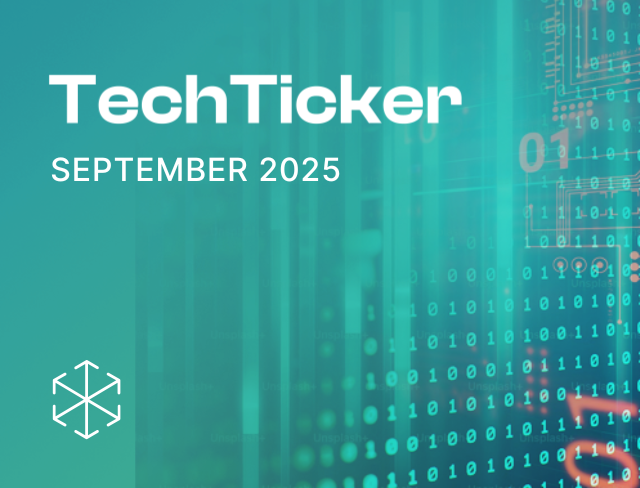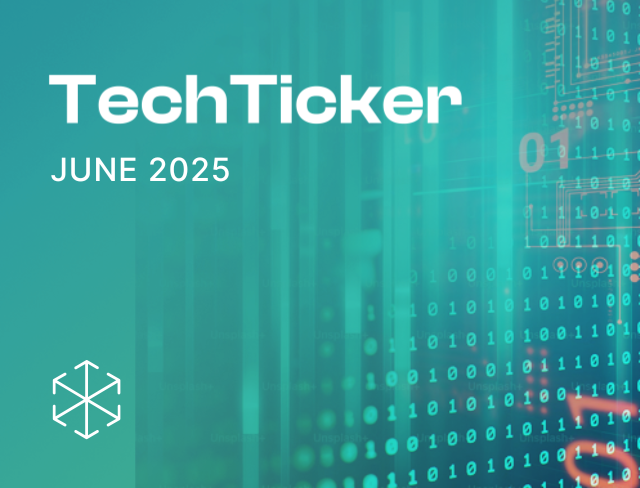B is for Budget
It’s February - the second month of the year if you believe that time is repetitive and linear or the month the budget comes out if you are a policy nerd. While there were a lot of expectations from the budget, it’s safe to say now that it neither wowed us or shocked us. This was an interim budget in an election year and the Finance Minister’s speech largely captured the government’s achievements over the past 10 years and was a teaser of what the government seems to be certain is a next term. As expected from an interim budget, the details were minimal but there were some call outs to tech.
A corpus is being set out for ‘tech-savvy’ youths to promote innovation and entrepreneurship. This is a corpus of INR 1 lakh crore that’s being established, with a fifty-year interest free loan period. It will provide financing or refinancing for long tenures with nil/low interest rates. The government hopes this will scale private sector research and innovation.
As expected MSMEs turned out to be a key focus area, with the government promising to provide timely financial, technological and training assistance. Sustainability also featured majorly, with the government committing to sustainable and comprehensive development. Strengthening the Electric Vehicle ecosystem is high up on the agenda and the government wants to support the creation of manufacturing and charging infrastructure. But the numbers show otherwise with the Faster Adoption & Manufacturing of Electric Vehicles (FAME) scheme seeing a significant cut in its allocations from INR 4807 crore in FY23 to INR 2671 in this year's Budget. The government is also looking to put forth a policy for further exploring the use of deep-tech in the defense sector.
Keeping in line with the push we have seen over the past few years about improving and increasing research and development (R&D), the Ministry of IT has gotten an increased budget allocation of INR 21000 crores, with funds earmarked for the Digital India Programme, the Production-Linked Incentive Scheme, cybersecurity and telecommunications.
Overall, we sense the budget trying to achieve a balance amongst various tech priorities and also bridging the existing gap in the semiconductor and display manufacturing and production ecosystem. Want to know more about our initial thoughts and key takeaways? See here!
New year, new IT Rules
It’s not really a new year if there is no proposed amendment to the IT Act framework. Keeping in line with this, the Ministry of IT is planning to amend the Information Technology (IT) Rules of 2021 to include regulations for artificial intelligence (AI) companies and generative AI models. The amendments are likely to require platforms using AI algorithms or language models to be free from bias. This means that AI models trained on biased datasets or with inherent biases will be prohibited from open use. The amendments may also introduce rules for deepfake and synthetic content. Officials from the IT Ministry have been emphasizing the importance of preventing bias and ensuring trust and safety on the internet. For this, they reckon AI models must undergo testing, probably in a sandbox, to guarantee the absence of bias before being introduced to the market.
● Why is this coming up now?
The Digital India Act that was intended to replace the IT Act, 2000, is not expected to be finalized before the 2024 general elections. According to Minister of State for IT, Mr. Rajeev Chandrasekhar, the Act aims to provide a secure and accessible internet for Indian users and reduce the dominance of major technology corporations. It places responsibility on intermediaries for the content on their platforms and proposes some pretty heavy penalties for breaches.
The Digital India Act which was envisioned as a new digital law for new-age India has been in the works for a while now and was expected to include AI regulation in it. However, with it being delayed, the government has been bringing out advisories under the IT Act framework to regulate AI-related concerns, such as deepfakes. So, right now too we are seeing a proposal to prevent AI bias under the IT Rules. The timeline for any change is not known yet. However, with it being election season and as it happened with the deepfakes advisories, it’s possible that we don’t see a change in the IT Rules, but advisories and guidelines are published under it.
Yet another setback for the gaming industry?
The 2023 amendment to the IT Rules 2021 holds that only ‘permissible’ online real money games can be offered in India (Read our primer on the amendment here). To check this permissibility, the amendment proposed setting up of gaming self-regulatory bodies (SRBs), who were to be responsible for approving online real money games. Only SRBs approved by the Indian government can endorse online real money games. This approval process was supposed to come into force once three SRBs were established. No such body has been approved yet, delaying the implementation of the rules. The IT Minister has in fact stated that only one application was received for setting up an SRB and that the government was not satisfied with the application, hence rejecting it. However, earlier media reports suggested that at least three to four applications were made for setting up SRBs. So, it’s unclear what’s happening there.
What’s possible though is that we are likely to see more government intervention in the sector because of this failure to set up SRBs. The online gaming sector is already gasping for air given the 28% GST rate that was imposed. So more government intervention could potentially hamper the trajectory of this fairly nascent sector, which saw a major boom between 2020 to 2022.
Kaching! Big gains for UPI
The Unified Payments Interface (UPI) achieved a significant milestone as 2023 saw 100 billion UPI transactions. According to data from the National Payments Corporation of India, in December 2023 alone, UPI transactions reached 12.02 billion, totaling INR 18.23 lakh crore. Throughout 2023, UPI handled 117.6 billion transactions, amounting to over INR 182 lakh crore in total value. For those who can assess the scale of those numbers, you know what they mean. For those who can’t - that’s ginormous! This is a big jump from 2021 and 2022, which saw 39 billion and 74 billion transactions respectively.
UPI doesn’t just have major success domestically, but it’s become an important part of India’s tech diplomacy. UPI is of course a major part of India’s Digital Public Infrastructure (DPI) and India is leveraging this to position itself as a leader in digital governance across the globe and particularly within the Global South. Through DPI initiatives, India is expanding its influence internationally. Since June 2023, India has signed agreements with several countries, including Armenia, Sierra Leone, and Suriname, to share its India Stack framework, a part of which is UPI. UPI has also been introduced to international markets such as France, UAE, and Singapore, with other countries like Japan and Mauritius expressing interest in adopting the interface. India has been pushing for fostering collaboration among G20 members and beyond through its digital diplomacy. The numbers relating to UPI’s success is definitely going to give a major boost to India’s tech diplomacy efforts and maybe even enhance bilateral relations.
That’s it from us. See you next month. If you enjoyed reading TechTicker, do share it.
Image credit: Gif









